Nobody likes to see a flat tire at night. Unfortunately, it is something unexpected, but it often happens when driving. So, what can you do about it?
Do not panic, as most drivers would. Second, it is always best to catch it early and replace the flat tire as soon as possible. You can also phone a friend to help you out. Alternatively, you can call roadside assistance or your insurance company for more help.
Read on to learn more about fixing a flat tire at night and potentially to replace it altogether.
What to Do If You Get Flat Tire at Night
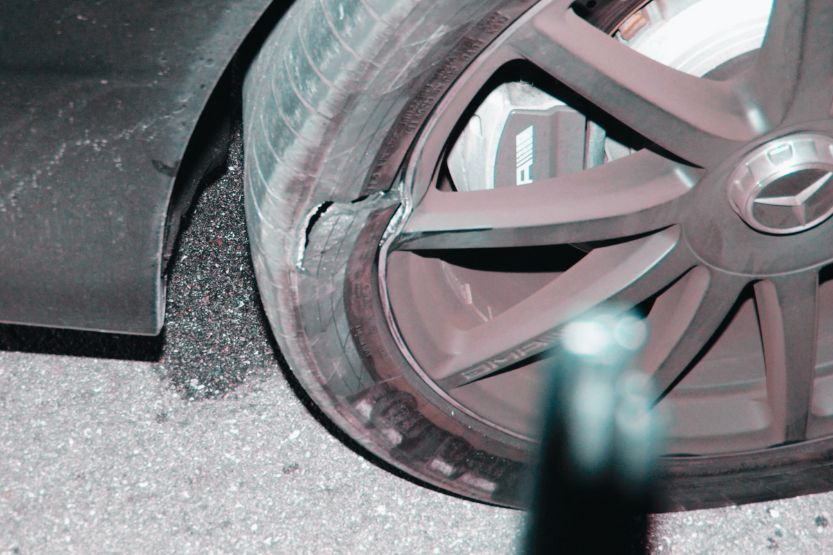
Pull Over Safely Away from Other Vehicles
When you get a flat tire at night, you should immediately stop driving and pull over safely away from other vehicles. Never go any further than necessary when you are on a flat tire.
Otherwise, you risk damaging your wheel and ruining any chance of the tire being repaired. You will surely need to turn on the lights to alert the other drivers and make your car noticeable at night.
Examine the Tires
Then, exit your vehicle and examine your tires to determine which tire is flat and whether more than one tire is impacted. You can try to change the flat tire with a spare one. You will need a tire wrench, a car jack, and a spare tire.
We should also mention that you should not always keep a spare tire on your car unless it’s a full-size spare.
You should only use it to securely transport your car to the closest auto repair facility so that a professional can quickly fix your flat tire. If the tire is too damaged to be repaired, you will need to buy a new tire.
Call an Emergency Roadside Assistance Firm
If you cannot change the flat tire, call an emergency roadside assistance firm that offers services around the clock.
Whatever you go for, you will need to fix it or replace it as soon as possible. Long-distance driving is not recommended for regular spare tires. You should drive no more than 70 miles or thereabouts.
Your tires have a limited lifespan, so it is essential to maintain them with routine repairs and check them for symptoms of wear and tear.
Why Would a Brand New Tire Go Flat?
1. Insufficient Sealing
Even a brand-new tire might lose air pressure due to improper installation or sealing of the tire.
2. Growing Issues
The tight seal between the wheel and tire can be compromised if the wheel’s mounting surface is scratched or rusted. This can lead to an air leak and a possible overnight flat tire.
Dented rims, usually when a car strikes a curb or a pothole, could also be why new tires are losing air.
3. A Damaged Valve Stem
A faulty air valve may be to blame for air leaking from a brand-new tire.
Although new tires often have brand-new valve stems installed, there is a chance that the air valve may not be in perfect working order. This can cause a gradual, continuous leak, which could cause a flat tire to develop overnight.
Moreover, due to constant exposure to chemicals, dirt, and road debris, the quality of a valve stem typically deteriorates over time.
4. Elevated Temperatures
The air in tires expands in the summer due to the high temperatures, which raises tire pressure. The likelihood of a leak and a deflated tire increases as air pressure does.
5. Sharp Objects
A puncture, which can be caused by sharp things like nails, screws, shards of glass, or a piece of wood, etc., is one of the most common causes of a flat tire. Because the object is still inside the tire, the puncture may not always be seen straight away, leading to a slow leak.
Because the air pressure gradually drops throughout the night, you might not discover a flat tire until the following morning.
6. Leaking Tire Bead
The tire bead can become clogged with sand, tiny stones, and other debris, creating a hole for air to leak. The tire could lose air overnight as a result of this leak.
7. Vandalism
A flat tire might also result from parking your car in an inappropriate area. It may not be a leak, per se, but rather a youngster having fun by intentionally deflating your car’s tires.
It is much similar to when you get slashed tires as well. As such, you will have to inflate the tire again, which should solve the issue.
How to Fix a Flat Tire at Night
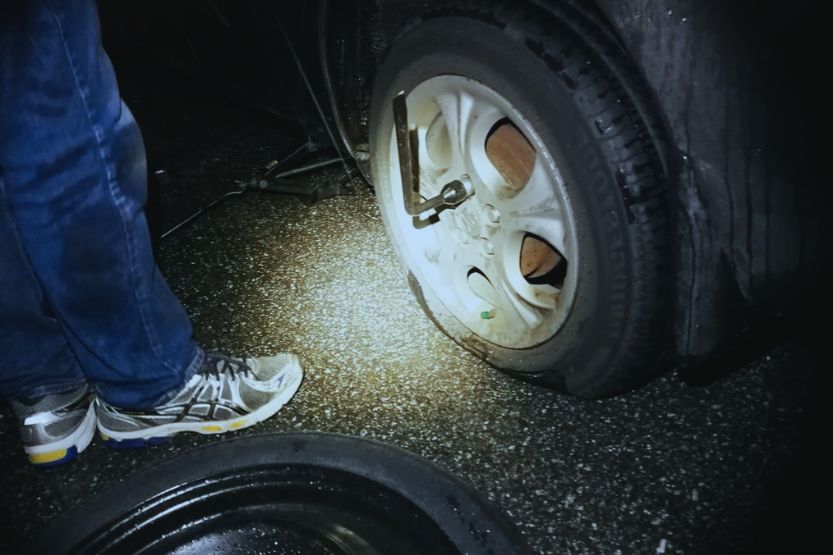
1. Change the Flat Tire
Here is how to change a flat tire:
Prepare Your Car
You must first stop your car and apply the handbrake once you are sure you are at a secure location. Turn off the engine, put the car in first gear (or P if it’s an automatic), and turn on your hazard lights.
You must be on level ground because if you’re not, your car will roll. The next step is getting everyone out of the car and ensuring they stand far away from the road and the vehicle.
Moreover, wearing a reflective jacket will ensure that you are completely visible to the incoming traffic if you need to replace a tire close to a busy road. A reflective warning triangle is also suitable for alerting other drivers about a problem.
Check to See If Your Car Is Rolling
For obvious reasons, you will want to prevent the danger of your car rolling away when you change its tire. So, you should have a wheel chock in hand.
Put it under the wheel diagonally opposite the one you’re replacing if you only have one. Put additional ones under the other wheels if you have them, just in case.
Elevate Your Car
We recommend you read your car’s manual to locate the jacking points if you have never changed the tires. Even if you have replaced a tire before, verify these jacking points because they vary based on the vehicle.
Once you know their location, you may attach your car jack and raise your vehicle until it is about 4 inches off the ground.
Loosen Things Up
Now that you have your wheel wrench, you should gradually remove the wheel nuts by turning them counterclockwise. As you do this, try to pay attention to your balance.
Once the wheel nuts give way, you risk falling if you are not sufficiently steady. Once you take off the wheel bolts, you can remove the flat tire.
Change Out the Flat Tire
It is time to mount your new tire to the frame after the flat tire has been removed from the way. Then, manually tighten the wheel bolts. After that, lower the jack, so the wheels are almost on the ground.
Put the Damaged Tire in the Boot
You just need to place the flat, damaged tire in your boot. You can repair or eliminate the damage if it is not too severe. Do not forget to remove it from your boot when you get home. By so doing, it will not take up valuable storage space.
2. Contact Roadside Assistance
Call a roadside assistance provider if you are unable to change the tire yourself or if you don’t feel comfortable. Since it is beyond regular business hours, you might have to wait a little longer. But, the company will send staff to you as soon as possible.
Most insurance companies collaborate with towing businesses to offer roadside assistance services around-the-clock. Request roadside assistance from your insurance company, and they will send a professional to assist you with changing your tire.
If your insurance does not provide roadside assistance, go online for local towing companies that offer 24/7 roadside assistance and flat tire services. Your location and the nightly rates will have an impact on the price of the service.
3. Phone a Friend
We all have that one friend or relative who bragged about their ability to repair a flat tire, even though not everyone knows (or the tools!) how to do so.
Call a friend or member of your family for assistance if you have never changed a flat tire and are not ready to do it right away or if you have a spare tire but lack the necessary tools. Ask someone who knows how to change tires and has the equipment required.
Again, what do you do if you get a flat tire at night? Call roadside assistance if you get a flat tire at night. Roadside assistance companies work 24/7 to help drivers solve car troubles.
How to Avoid Getting a Flat Tire
1. Check the Tires Regularly
Probably the one thing you should do is inspect your tires in person and regularly. You should do this at least once a month. As you circle each tire, pay close attention to the tread. Examine your body for abrasions or foreign items, such as nails or other items.
If you discover something, you must be cautious while choosing your following action. For instance, the wisest thing to do might be to remove a nail because doing so might stop the nail from later penetrating the tire.
On the other hand, the nail can be the only obstruction, causing rapid deflation. So, if you take something out, watch and see if any air is leaving. You would not want to learn about it after getting on the freeway.
2. Examine the Pressure
Unfortunately, a weekly check of your tires won’t be enough to keep you from experiencing a flat tire while driving. For example, even if you bend over to check something, a small enough puncture can be tough to spot sometimes.
Therefore, you might want to spend money on a hand-held pressure gauge to check if the tire pressure is at the level specified in your vehicle’s manual.
It doesn’t take long, and in the long run, it might save you a ton of money and time, of course.
If you decide to check your tire pressure, wait until the tires have cooled. Your tires heat up while driving, which may result in incorrect pressure readings.
3. Turn the Tires
Rotating your tires will increase lifespan, improve ride quality, and eliminate uneven wear patterns. Generally, you should rotate your tires every 5,000 to 7,500 miles. But, of course, your owner’s manual will include the exact recommendations for your particular car model.
4. Avoid Overloading
Your car’s weight is also something to keep in mind. You can find such information on the label that shows your tire pressure.
It is essential to stick to such recommendations as overloading might damage your tires over time, or you may need to flatten them yourself.
5. Get a Second Opinion
You might want to take your tires to a nearby garage and have an expert look if you’re unsure what to check for or if you feel they’re not in the ideal condition.
Although you might be concerned about having to spend more money than you’d like to have them replaced, it may still be a better option than having to have your car pulled from a highway because you didn’t bother.
6. Call Your Insurance Company for More Help
If you don’t have the proper auto insurance, dealing with a flat tire at night might be stressful. So, it is always better to have insurance without losing coverage.
Moreover, your insurance company should make you feel secure no matter where your travels take you. So, they will provide you with their roadside help package.
FAQs
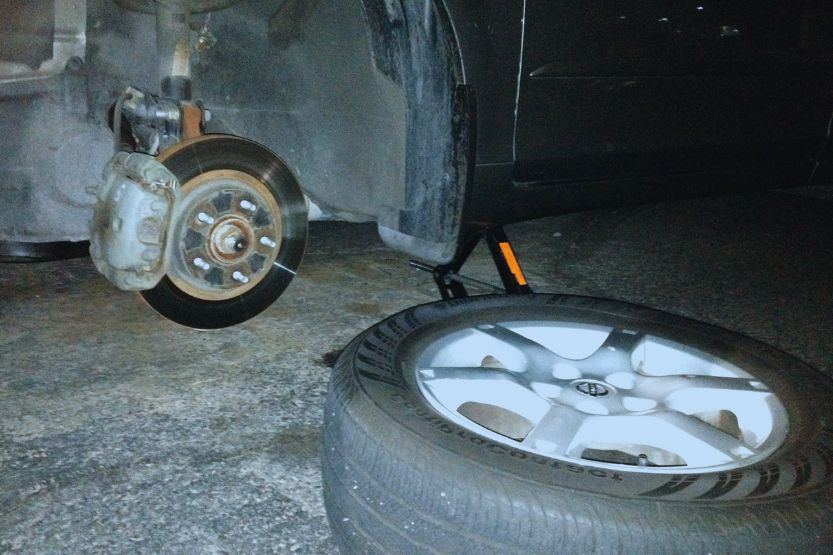
What Should I Do If the Tire Went Flat Overnight but Now Holds Air?
Stop driving and park your car in a secure spot. Then, it’s a big blessing if you’re tech smart and have the required kit and spare tire on hand.
Your job is to identify the source of the flat tire, remove it using the appropriate tools, and replace it with a spare tire. This should solve the issue.
If it did not, you would need to call roadside assistance or your insurance provider if you don’t have the necessary tools to replace the tire.
How Long Will It Take to Replace Tires?
The time it will take to replace tires depends on whether you are changing or replacing them with a professional. Generally, it should take around 15 minutes if you have done it before. However, it may take more than an hour if this is your first time doing it.
Can a Flat Tire Damage the Rim?
The rim can suffer quite a bit with a flat tire.
The wheel’s structural integrity will be compromised if the car is left idling for a long time with a flat tire. This is so because a car’s rims are not made to hold the vehicle’s complete weight without its tires’ help.
If you drive your car with a flat tire, severe rim damage may result. This is because you go on the car’s rim when you have a flat tire.
This can severely harm the entire vehicle, in addition to causing cracks and bends in the rim. It can result in costly issues with the alignment, brakes, suspension, rotor, and fender of the car.
How Long Can You Drive with a Flat Tire Without Rim Damage?
The answer to how far you can travel on a flat tire before endangering the rim is very few miles. At most, you can travel one or two miles on a flat tire before the rim is irreparably destroyed.
It is best to keep a slow pace of 15 to 20 mph while driving on straight roads.
Can You Leave a Flat Tire Overnight?
If your car tire becomes flat overnight, you can leave it, but you should only use this option if nothing else works.
Repairing the tire should be your top priority. Doing this can keep the tire and rim from suffering irreparable harm.
If you can do nothing else and you have no choice but to leave the flat tire at night, you will at least need to use a jack to raise the edge of the car. This will prevent any lasting damage from occurring.
Conclusion – How to Fix a Flat Tire at Night
Tire problems can be a pain, which most drivers deal with at some point. When you get a flat tire at night, you should stop driving immediately and find a safe area to pull away from other cars.
It is important not to drive longer than needed as you risk breaking your wheel. Turn on your hazards to make your car visible at night and to warn other drivers of the problem.
After that, get out of your car and check your tires to see which one is flat and whether more than one is being affected. You can try changing the flat tire with a spare tire if you can do so yourself.
Remember that a spare tire is not designed for extended use at highway speeds, so drive slowly if you use one. If you can’t change the tire yourself, call roadside assistance or your insurance company for more help.

![Does Fix-a-Flat Work? [Is Fix-a-Flat Effective?] does fix-a-flat work](https://roadsumo.com/wp-content/uploads/2021/11/does-fix-a-flat-work-150x150.jpg)
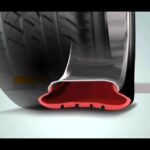
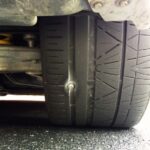


![How to Use Fix-a-Flat [8 Easy Steps] how to use fix-a-flat](https://roadsumo.com/wp-content/uploads/2022/03/how-to-use-Fix-a-Flat-150x150.jpg)


